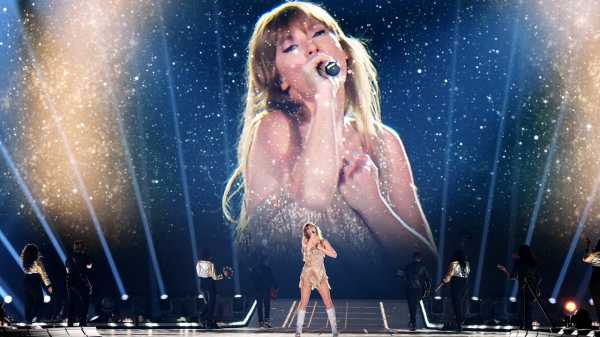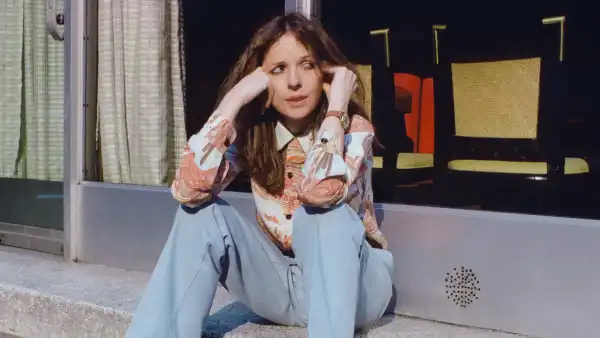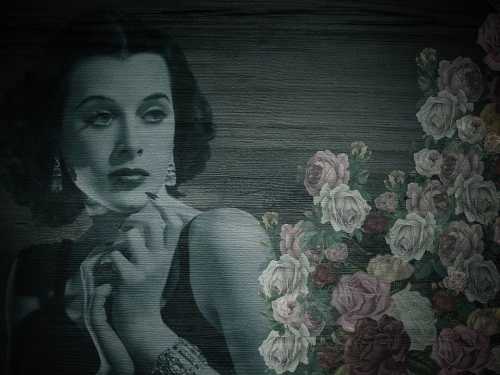
Save this storySave this storySave this storySave this story
There was a moment, about twenty-five minutes into Taylor Swift’s first Eras Tour show, in Glendale, Arizona, when fans began to realize that the concert was much grander than they had anticipated. In the lead-up to opening night, there had been a lot of speculation about the format of the show. The premise was ambitious: the show would span Swift’s entire musical career, which is so varied that each album constitutes its own “era.” Presumably, this endeavor would involve Swift performing one song or so from each of her ten albums. But it was also hard to imagine her leaving so many others on the cutting-room floor. On Reddit, a few psychos speculated that Swift might be onstage for three hours or more, like a one-woman jam band. It was the only way, they argued, for her to come remotely close to hitting everything. More world-weary fans, though, listed a variety of logistical concerns, including ordinances banning fireworks and loud music late at night. Legality aside, three hours just seemed like a lot. “3 hour performances would be incredibly hard on her voice,” a user named ellisoph wrote.
“Agreed!” the original poster replied. “I’m just sharing dreams.” (Swifties are notoriously nice—at least, to one another.)
In Glendale, which changed its name to Swift City in honor of the event, Swift opened with six songs from the “Lover” era—an explosion of pastel hues, bubblegum pop, and L.G.B.T.Q. allyship. After that, she played three songs from “Fearless,” then five from “evermore.” As the show wore on, hellopizzafap wrote on Reddit, “ID LIKE TO POINT OUT WE ARE 30 SONGS DEEP AND STILL HAVE 3 ERAS TO GO.” In Glendale, things were starting to fall apart. “The stadium ran out of water,” one person complained afterward. “Like the entire stadium.” Swifties with tickets to later stops on the tour began recalibrating their plans: one woman wrote that she might switch out the dress she’d wanted to wear for a pair of glitter pants, in order to hide her compression socks. There was one attendee, live-streaming the concert, who had seemingly anticipated that Swift would be putting on the show of a lifetime: “Don’t worry about my fucking battery, bitches,” he told his audience on TikTok. “I got two phones and a power bank.”
Swift performed forty-four songs in total, for an approximate run time of three hours and fifteen minutes. There were sixteen costume changes, most of which happened onstage; she took no real breaks. Fans were in disbelief, but they also seemed genuinely concerned for her health: “This bitch is literally going to die doing all of these shows,” one person wrote. It was the first night of the tour, but it also felt like an ending. “This is what I imagine a farewell concert to be,” another wrote. “Like, the last show you do in your life. I have no idea how she’ll do this again tomorrow.”
Taylor Swift has done to stadium shows what Beyoncé did to Coachella, and to millennials what Bruce Springsteen did to baby boomers. She has crafted a spectacle—a long-form, real-life experience in an age that is otherwise dominated by short-form online content—though the tour is also perfectly designed to be consumed online. The show’s length, and its emphasis on albums, might be suggestive of something more old school, but there are parts of the tour that feel developed for the algorithm, such as Swift’s performance of the song “Bejeweled,” which incorporates part of a viral TikTok dance, or when she references comments that she’s read about herself online, including the phrase “mother is mothering.” I, like many fans, have been following the tour through an endless stream of content since that first show in Glendale.
Swift’s fan base skews female, millennial, and white, though there’s plenty of diversity within: take the Gaylors, a contingent of Swifties who are convinced that the artist’s lyrics are sapphic, or the rapper Azealia Banks, who is famous for hating everyone except Swift, of whom she is oddly protective. (“Taylor, this guy is gonna give you scabies,” Banks recently wrote on Instagram, of Swift’s alleged boyfriend, Matty Healy. “He’s not on the level of powerful puss u worked HELLA Hard To build.”) Ultimately, Swifties are united by two main qualities: perpetual onlineness and sleep deprivation, because Swift often saves important announcements for late at night. (While rolling out her most recent album, “Midnights,” she dropped a series of TikToks at the titular hour; one of my friends, complaining that the gimmick had ruined her sleep schedule, lamented that the album had not been called “9 P.M.s.”) In the dead of the night, like many Swifties in the Eras Tour era, I lie awake watching videos of Swift sprinting across the stage barefoot and nearly falling off the edge. As the sun rises, I bookmark an Instagram Reel recommending high-quality concert earplugs, having read horror stories about Eras Tour-induced tinnitus.
Even organic parts of the concert—such as Swift moving the mike away from her face, in a clip that has gone viral, in order to sneak in a cough—seem to serve a higher purpose. They are proof that Swift, who for most of her career has released an album every two years, like clockwork, is a real person with surprising vulnerabilities. Some conspiratorially minded Swifties have speculated that these unplanned moments are just as orchestrated as the rest of the show. At every concert, Swift performs two acoustic surprise songs; after watching the artist forget the lyrics to one of her most beloved songs, and mess up the bridge of another, some fans took this as a sign that even the right clock is broken twice a day.
Swift, who is thirty-three, has now been famous for exactly half the time she’s been alive. (She released her début single, “Tim McGraw,” seventeen years ago.) But, for more than a decade, she managed to be both commercially popular and puzzlingly uncool. Her earnestness, along with her insane work ethic, made her subject to suspicion. When Kanye West interrupted her at the V.M.A.s, a moment that might have earned her some sympathy, it seemed instead to throw her carefully curated persona into sharp relief. Today, though, the world has come around. Even music snobs begrudgingly respect the poeticism of “folklore” and “evermore,” Swift’s critically acclaimed indie albums. Former haters have chalked up their previous feelings to an internalized misogyny. For some, this epiphany may have come when Swift launched a feminist crusade against the label executive Scooter Braun, the owner of her masters, and began rerecording her first six albums. At an Eras Tour show in Nashville, she announced the impending release of “Speak Now (Taylor’s Version)”, and the crowd spent the next several minutes screaming and sobbing—a remarkable display of excitement for an album that already exists.
Swift’s fans lovingly refer to her as a “capitalist queen.” The success of the rerecordings and the Eras Tour have made her the second-richest woman in music, with an estimated net worth of seven hundred and forty million dollars, according to Forbes. In the original Ticketmaster sale, Eras Tour tickets were supposed to cap at around five hundred dollars, but resale demand instantly inflated them, in some cases, to as much as ninety thousand. She sold two million tickets in one day, a record that caused the platform to implode. The resale market has been rife with grift; I’ve seen several videos of people showing up at the stadium only to discover that their secondhand stubs are fake. Not that being outside the stadium is the worst place to be: thousands of fans have knowingly set out on pilgrimages that end in the parking lot, where they can listen—and sing along—to the show, from a distance. Swift has matched her fans’ loyalty to her with an equal devotion to them. When a lightning storm began on the night of her third Eras Tour performance in Nashville, she decided to wait it out instead of cancelling the show. Attendees were kept in a holding area of the stadium until the weather had passed, and, online, they posted stories of absolute mayhem: young girls peeing their pants, adults passing out, a lactating mother yearning for a breast pump. Swift eventually came onstage at 10 P.M., and performed until 1:30 A.M., as rain poured on her and the crowd.
Perhaps the most impressive part of the Eras Tour is seeing Swift take a show fit for a late-career Las Vegas residency and bring it from one N.F.L. stadium to the next, where she must grapple with bad weather, mid-concert injuries, and occasional production malfunctions. The tour is, in some ways, a cudgel, demanding the respect of critics who once dismissed Swift’s talents as a live performer, back in the early days, when her voice got warbly on high notes and the choreography was charmingly awkward. But it is also, of course, for the fans. While introducing “mirrorball,” one of the surprise songs in Glendale, Swift described the track’s inspiration to the crowd. “I was trying to think of sort of an eloquent way to say that I love you, and I need your attention all the time,” she said.
“She’s finally going to therapy,” a fan wrote on Reddit, with a praying-hands emoji.
A few Saturdays ago, I travelled to Philadelphia to attend one of the Eras Tour shows at Lincoln Financial Field. I took an Amtrak train from New York, which was full of other people who were going to the concert. Many passengers were carrying transparent tote bags, the only kind allowed in the venue, with their most precious belongings: phones, phone chargers, and packets of Liquid I.V. In the seat next to me, a young woman scrolled through TikTok videos of the previous night’s performance; she watched all of them at full volume, with no headphones.
As I arrived at the stadium, I began to worry that I had spoiled the Eras Tour for myself, having digested way too much content about the set list, the costumes, and the choreography. I was wrong. One thing that social media cannot properly capture is the transformation of a football stadium, typically a center of male aggression, into a sanctum of gleeful femininity. It was like the Women’s March, but with sequins instead of pussy hats, and probably the same number of male allies. The men’s bathrooms became women’s bathrooms—because, why not?—and the trash cans overflowed with sanitary products, as if, within minutes of entering the stadium, all of our periods had synched. One might say that we were all in our “Red” era, though I’ve also read multiple stories of pregnant women going into labor after the concert. (“Motherhood era?” one headline read.)
Every person I spoke with at the show was the nicest person I’d ever met. The security guards, the hot-dog salesmen, the bartenders, the audience. They were all so nice that I found myself manufacturing excuses for interaction, asking how to find my section even when I knew where it was. Parents have said that they like Taylor Swift because her lyrics are clean enough for their children to sing along to, but anyone can write family-friendly music; only Taylor Swift can turn the Philadelphia Eagles’ stadium into a safe space.
In line for the men’s bathroom, one girl asked me to guess her age. I said fifteen; turns out, she was twelve. “Your daughter is very precocious,” I told her mother, who nodded, solemnly. The twelve-year-old, who had never been to a Swift concert before, said she was hoping that Swift would bring out a special guest—Katy Perry, perhaps. Swift is known for this kind of stunt; on her previous tours, members from the cast of “Friends,” Kobe Bryant, and an entire women’s soccer team have appeared onstage. During the “1989” World Tour, she brought out Mick Jagger. (“I text Mick and I said, ‘Hey, are you in town? I’m playing a show tomorrow. Do you want to come out and sing ‘Satisfaction?’ ”) But the Eras Tour is not a testament to celebrity; it’s a testament to Swift. Though the crowd tends to reduce each “era” to an aesthetic—“Fearless” is gold, “Red” is red—Swift clearly sees each one as a representation of a distinct musical persona. Celebrity appearances have been carefully chosen with an eye toward cementing her own lore. When Jack Antonoff, her frequent collaborator, joined her onstage for her first show in New Jersey to perform “Getaway Car,” they nodded at a behind-the-scenes clip of their original songwriting process, which has become something of a meme.
In 2011, Swift told The New Yorker that she has long been “fascinated by career trajectories”—the idea, as she put it, that “ ‘this artist peaked on their second album. This artist peaked on their third album. This artist peaked with every album.’ ” She went on, “I sometimes stress myself out wondering what my trajectory is.” Swift has traded in this self-consciousness for a self-awareness, one that has likely been facilitated by the therapeutic process of rerecording, and reclaiming, her older works. She has built a tour solely devoted to the idea of a trajectory—that of a career, of a musical identity, of a life—that can be traced cleanly from one “era” to the next. It’s a funny way to reach an understanding of oneself, and there are some notable gaps: for example, there is no music from Swift’s first album, the only era that is not part of the tour. And though Swift’s task might be more easily accomplished on a therapist’s couch, it’s extremely entertaining to watch her do it onstage, in front of tens of thousands of people.
One of the most surprising elements of the concert was how some of the Swift songs that I’ve always found irredeemably cringe—for example, “You Need to Calm Down” and “Look What You Made Me Do”—were the most exciting to watch live. During the latter, Swift performed with several digital versions of herself and with background dancers dressed in the garb of her various eras; at every show, she picks a different era to hold up a “loser” hand sign to—either a completely random choice, or a genuine reflection of whichever part of herself she hates that day.
As Swift finished performing “champagne problems,” a woman in my row excused herself. “I’m going to go to the bathroom because the next song is my least favorite on the set list,” she said, as the opening notes of (the perhaps appropriately named) “tolerate it” began to play. As the concert went on, I noticed more than one person checking “Eras Tour” playlists on Spotify, as if consulting digital playbills. A video recently went viral of a woman (likely the uninformed parent of a Swiftie) reading from a large stack of papers during the concert; she had printed out the lyrics for all of the songs in advance. At the show’s close, confetti blasted throughout the Eagles stadium, and, as I was leaving, I noticed dozens of fans scooping it up and dumping it into their transparent bags. Where some see a keepsake, others see a money-making opportunity: the bags have started going for forty or fifty dollars on eBay, often purchased by Swifties who weren’t able to get tickets.
In the days after the concert, I noticed some Swifties posting on Reddit about a new phenomenon: some are struggling with a post-Eras Tour depression, in large part because they went to the show but are unable to remember it. It’s not that they were drunk, or that they weren’t paying attention; they just don’t remember. “It’s strange,” one person wrote, saying that, despite having attended two Eras Tour performances, she could recall only a few details, like Swift’s outfits, “but nothing about me being in that moment experiencing it.” Others mentioned having similar out-of-body experiences and blurred memories. A user named bellahadidpizza, who had also blacked out during the concert, consoled the group by noting that “high sensory experiences” have been known to cause amnesia. (One commenter said the same thing had happened to her during her wedding.) No one had a good solution. But many had returned to consuming footage of the show, hoping it might spark something. As one person wrote, “I’ve done nothing but cling to the videos I took to take me back.” ♦
Sourse: newyorker.com






